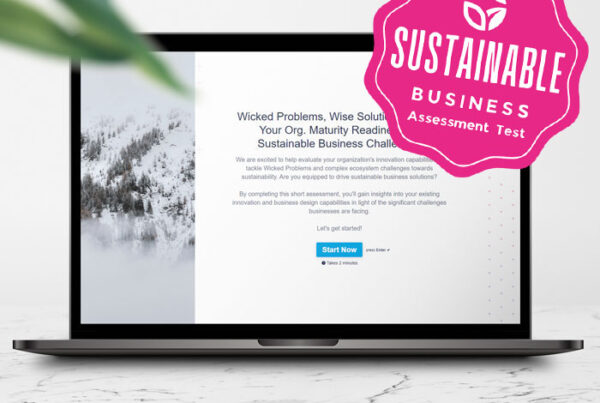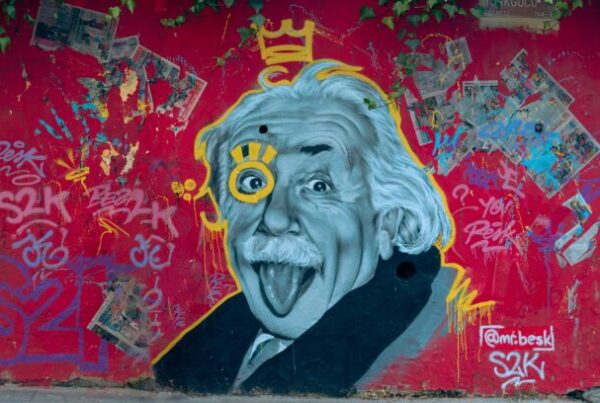It’s easy to get carried away by momentum, energy and enthusiasm when running the innovation and business design process. It’s a highly rewarding way of working with immediate tangible, measurable results. But there is a double edge to it…
Speed and inertia keep the team moving forwards with purpose whilst intense pressures are felt in the short-term to provide customer and business validation. Focusing and prioritizing on the immediately-measurable can have catastrophic effects and unintended consequences for both people and our planet perspectives.
Key learnings from this article
- Learn what unintended consequences are when innovating or inventing.
- Discover reasons why we tend to ignore unintended consequences.
- Read 33 examples of both unintended and intended consequences playing-out.
- Practical tips in how to manage and uncover unintended innovation consequences.
TL;DR: Innovation teams often fail to fully understand the wider unintended negative consequences and outcomes on wider ecosystems and stakeholders. Several examples of unintended consequences are shared along with practical methods and tools to understand and anticipate possible future negative scenarios, enabling appropriate decision making in the now.
Innovation: ready, steady… go!
C ongratulations! You have just secured the resources and requirement needed for new innovation success. You’ll soon be on your way to validated learning outcomes, scaling and profitable growth:
- Strategic mandate, check!
- Corporate sponsorship, check!
- Right team mindset and culture, check!
- Clarified problem space, check!
- Tried and tested innovation methodologies, check!
- Playbook, tools, templates, process ready to go, check!
All that’s left to do is to get the doing, fast. Mark Zuckerberg famously coined the phrase: ‘Move fast and break things’, seemingly condoning the inevitable negative consequences and creative destruction by being a fast and innovative organization.
The usual innovation approach
The doing part typically consists of a standard customer-centric innovation process, methodology and semi-stage gate governance. Something along the lines of:
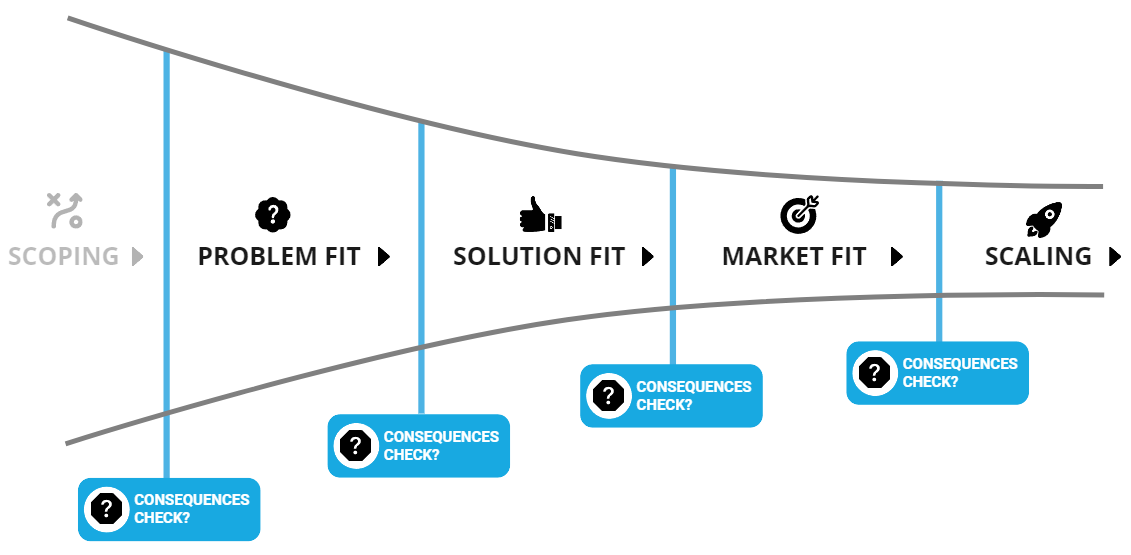
PROBLEM FIT
- Research & reveal your customer pains & problems
- Create emotionally-driven challenge how might we statements
- Ideate broadly, widely, radically & disruptively
SOLUTION FIT
- Narrow down to a single concept to test
- Build prototypes & MVPs to test & (in)validate critical assumptions
- Run experiments, iterate & learn in quick cycles
- Refine your value proposition for key stakeholders
MARKET FIT
- Prototype monetization options & market opportunity
- Create a business model canvas snapshot
- Tease-out critical assumptions to (in)validate & test
- Run experiments, iterate & learn in quick cycles
SCALING
- Gain evidence of concept & business model momentum
- Pitch & get business unit seed funding
- Continue to build, measure, learn your way to market…
The standard innovation process typically lacks tools and methodologies to map unintended outcome consequences.
What’s the issue with the standard innovation process?
All well and good I hear you say. So, what’s the problem? In short, critical self-reflection.
Pause reading for a moment and ask yourself:
”Q. When was the last time we formally stopped to assess whether or not there were any potential 2nd and 3rd order negative consequences of implementing and introducing this new invention or innovation to the unsuspecting World?

For many innovation teams, the answer might be, hardly ever, if at all. It’s typically just not part of the typical innovation process or success metrics. For example, the prolific Google Design Sprint format does not stop to consider outcome consequences.
- Who should ultimately be responsible for our unintended outcomes?
- How can we morally and ethically seek to prevent them occurring?
- Does considering consequences too early-on stifle innovation itself?
Three seminal books underpinning much of the innovation process, methodology and logic today logic today: Change by Design (by Tim Brown); The Lean Startup (by Eric Ries) and Business Model Generation (by Alexander Osterwalder and Yves Pigneur) mention the idea consequences a mere combined total of 8 times. They are touched upon only in the context of consequences to the organization doing the innovating, not the wider world! This is worrying.
Teams tend to simply follow their standard innovation governance as instructed:
VALIDATION
We have the evidence our customers want it through our validated prototype/MVP. We make it as our customers desire – check
EVIDENCE
We have validated evidence of willingness to pay by our most important business model stakeholders. We can make money viably. – check
FEASIBILITY
We have the technological capabilities to develop the systems and services to support it. We can build it feasibly – check
”The widely-used Google Design Sprint process does not stop to consider outcome consequences as part of the process.
Why do we tend to ignore unintended innovation consequences?
John Locke first discussed the idea of unintended consequences back in 1824 with regard to central bank interest rates. In 1936, sociologist Robert Merton proposed a framework to inform new public policy creation, called ‘purposive action’. His theory attempted to create a more holistic understanding analysis of potential outcome effects and impacts.
Merton’s Five Causes of Unintended Consequences
- Ignorance – lack of knowledge or understanding of the problem and context.
- Error – analytical errors, interpretations, engrained habits or poor reasoning analysis.
- Short-termism – focusing on short term gains rather or forgetting or negating to consider long term consequences
- Dogmatism – holding-on to existing values, beliefs and policies as a form of protectionism
- Fear of change – creation of self-defeating prophecies based upon unrealistic, uncontrollable acts of God. Being bounded by our own self-imposed limiting beliefs without question.
These five factors play likely parts in why unintended consequences tend not to be analyzed when designing, creating and implementing new forms of business value. They just get in the way, slow you down and reduce chances of securing resources to drive any ultimate impact.
Other reasons why we fail to consider the negative consequences of our innovation efforts to name a few:
- Complexity levels – impossible to understand all points of view
- Perverse incentives – rewards outweigh the need to reflect
- Human ignorance – willfully choosing to be blind and look the other way
- Self-deception – denying or rationalizing away significance or importance
- Human nature – thinking, feeling, acting in ways that prevent our understandings
- Cognitive and emotional biases – subconscious human behaviors blinding us
- Butterfly effect – the impact of one small change on the wider world systems
- …
The need to believe in what we’re creating
Watch any team pitch for investment and it is clear to see that in order to do innovation, team members must believe their concepts, efforts and intended outcomes. They must show they believe in their innovation because they need to convince and secure the funding necessary to continue the validation journey. Who would invest money in a team who appears unmotivated, lacks conviction and can’t envision a better future?
Teams need to believe their innovation will be good for the world and should be adopted by all of society. This is pro-innovation bias and it necessitates team members to see the world through over-optimistic, rose-tinted spectacles. It forces teams to play this game as part of the methodology to gain resources to proceed. After all, innovation is hard enough, without choosing to sabotage your own project, by pointing out potential bad consequences early-on.
Teams generally have good intentions in the long run: to solve customer needs and problems whilst generating a profit for the company (aka: innovation). Our customers will be happy; our sponsor will be happy; and so will our shareholders. All good, let’s get-on with implementing! #biastowardaction and all that.
However, history is full of examples of how this approach can have devastating impacts for all of us…
Don’t miss out!
Subscribe to get our latest FREE tools, methods, playbooks, guides, articles + more
33 intended & unintended consequences examples
The reality is, innovation, invention and business design can and does have both positive and/or negative outcome consequences over time, whether we like it or not.
The current dominant innovation process doesn’t inherently force us to uncover unintended consequences and this is problematic, as we shall see, from some interesting historic examples.
11 example innovations & inventions with +positive intended consequences:
“Changes call for innovation, and innovation leads to progress”.
— Li Keqiang
Here are some positive-intended innovation and inventions along with their real-world consequences:

Unintended consequences of Swiss cheese makers playing rap music during fermentation to improve taste
1) De-militarized conflict zones and wildlife
North and South Korea’s Demilitarized Zone (DMZ) created a natural wetland and biodiversity hot-spot which supports 82 endangered species.
2) Sinking ships and coral reefs
Shipwrecks initially creating natural wonderful new coral reefs in the short term, only to create black reefs which attract coral destroying species.
3) Aspirin and heart attacks
Pain killer finding additional beneficial uses to prevent heart attacks by thinning the blood and slowing clot formation, only to increase chances of stroke through bleedings.
4) Super glue and gun-shot wounds
First used during the Vietnam War to save lives by using in a spray to form as haemostatic agent to patch organs of injured soldiers. Later uses as a recreational drug to get people ‘high’ increasing risks of seizures, coma, heart attack and death.
5) Radar towers and re-heated meals
Initial radar technology from WWII used to heat food in microwaves. Led to the creation of cheap re-heatable meals with poor nutritional value. Low energy conversion of efficiency to heat accounts for 0.3% global electricity consumption.
6) Useless glue and innovation workshops
Accidental creation of a low tack glue, led to the creation of the Post-it note by 3M in 1968. However, of left in books for years, the glue can become acidic, whilst the paper dye coloring makes them difficult to use in recycling.
7) Blue pills and divorces
Sildenafil was initially designed to treat high-blood pressure, but side effects showed it could create erectile dysfunction as Viagra. Long term effects from bootleg dealers, causing vision problems. Marriage breakups caused by middle aged men’s new found sexual impulses.
8) Missiles and dental braces
Polycrystalline used to protect antennae in heat sinking missiles, used as a spin-off to create dental brace orthodontics to straighten teeth.
9) Hip-hop music and Swiss cheese production
Low frequency resonation of hip-hop music positively influencing the depth of flavor of the various cheese varieties in Switzerland.
10) Lasers and weed killing
Self-driving farm bots identifying and killing 100,000 weeds per hour, reducing the need for harmful and expensive chemicals and pesticides.
11) Nespresso capsules and circular economy
When Nespresso first launched their modular coffee machines with aluminium, environmentalists were quick to point out the enormous raw material waste and pollution generated. This led Nespresso to launch a free recycling program to repurpose capsules into other consumer products. However it is hard to measure the real uptake and usage of such a program.
22 examples of innovations & inventions with -negative unintended outcome consequences:
“Most of the undesirable consequences emerge when the innovation is widely diffused and never comes to the attention of the innovator”
— Everett M. Rogers
Here are some unlikely combinations of examples of negative-unintended innovation consequences as a result of introducing new innovations and inventions:

Unintended consequences of blood pressure pills as Viagra, marriages and long-term health conditions.
1) VR headsets and insurance premiums
Rise of virtual reality headsets driving up insurance premiums by 31% due to users smashing TV’s and breaking furniture because they can’t see what they are doing in reality.
2) 5G mobile phones and aircraft safety
5G mobile frequency bands causing aircraft radio altimeter failures for automatic landing systems, endangering the lives of passengers.
3) Banning cars and increased pollution levels
Mexico banned certain number plates during the week to reduce pollution by 15%. Led to people car-pooling, increased taxis and buying extra vehicles with different number plates. Pollution increased significantly.
4) Killing dangerous snakes & revenue models
The cobra effect. British government wished to reduce numbers of venomous snakes in India. They offered a bounty for every dead snake. Snakes were then bread to kill in order to generate regular incomes, leading to increases in deadly cobras.
5) Pesticides and entire ecosystems collapse
Global use of pesticides increasing food yields at the cost of collapsing wildlife ecosystems and biodiversity.
6) Solar panels and increased energy consumption
Renewable Heat Incentive programs to encourage companies to reduce energy by switching to green sources. Subsidies allowed companies to make a profit from the incentives which led to increased energy consumption by heating empty buildings!
7) Fructose and health system collapse
Cheap refined sugars (fructose, sucrose, glucose…), cause metabolic diseases such as diabetes, gout, cholesterol levels, heart disease has the consequence of placing enormous strains on health systems to treat chronic conditions.
8) Four pests’ policy and ~40-50+ million people dead
Chinese policy in the 1960’s to eliminate rats, flies, mosquitos and sparrows. Created severe ecological imbalances of insect species and significantly contributed to the causes of the Great Chinese Famine where an estimate 15-50 million people starved to death.
9) Hair combs and marine ecosystem collapse
Belgian chemist Leo Baekeland brought innovations to market made of Bakelite plastics in 1907. He probably didn’t stop to imagine the 270,000 tons of ocean island plastic floating around one hundred years later, nor the 700 marine species being threatened by ingesting plastics.
10) Prohibition and organized crime
Making alcohol consumption illegal, led to the creation of organized crime in America. Also led to one of the most watched sports in the world: NASCAR racing which had origins in highly modified performance vehicles to out-run the police during prohibition.
11) Barbara Streisand privacy and 400k home visits
The Streisand effect as it is now known. An attempt to hide, remove or censor information has the unintended consequence of increasing overall awareness, leading to the opposite effect as intended. Streisand tried to get photographs of her home removed from public view, which only motivated 400+k home visits by curious minds.
12) Airbags and baby deaths
Airbags originally designed to save lives in car accidents increased the deaths of children who were placed in the front passenger seats. Airbags trigger killing babies due to the violet bag deployments.
13) COVID-19 and aircraft landing safety
After the recent pandemic, aircraft were left in storage for long periods of time without maintenance. Insect nests and larvae getting into essential aircraft systems causing safety issues. Aircrews going back to flying with low real-world flight hours caused an increase in number of ‘unstabilized landing approaches’ and led to fatal crashes.
14) British garden conservatories and energy consumption
South facing home extension garden conservatories were intended to lower British energy consumption by using the suns heat. In reality home owners used the conservatories as living spaces and installed additional heaters for the winter, ultimately increasing, not decreasing energy consumption.
15) Precision guided bombs and more civilian deaths
The development of precision guided bombs for use in highly built-up areas actually increased civilian casualties as the margins for error were narrowed by military forces. These weapons also made adversaries relocate to densely populated areas in the hope it would provide them more protection from aerial attack.
16) Greener aircraft engines and increased climate change
The development of higher fuel efficiency passenger engines, led to a reduction in ticket prices. More passengers buy tickets and take planes, resulting in more air travel, pollution and greenhouse gases being created overall.
17) Mosquito nets and mass-starvation
The Bill and Melinda Gates foundation provided mosquito nets to communities in Zambia to prevent malaria. The nets ended up being used for fishing instead as the weave was tighter and could catch more fish to sell. Young fish were also caught, killing off fish stocks entirely and causing mass starvation AND malaria.
18) Location tags and domestic abuse rates
Apple AirTags (small indiscrete tracking devices), are being used by stalkers to track victims and has led to an increase in domestic violence. They are also being used by thieves to track and steal cars, bikes and other large items (and by those wishing to find their items if stolen).
19) Engine vibrations and millions of painful deaths
Ethyl (or lead) was added to car engines from 1923, to prevent unwanted vibrations called ‘knock’. However, the lead in ethyl is a neurotoxin and causes permanent damage to the nervous system including: blindness, insomnia, cancer, kidney failure, hallucinations, coma and death. Leaded petrol kills over 1.2 million people per year and is now banned internationally. Lead pollution remains toxic left in the soils next to highways to this day.
20) Mouldy food and the ozone layer
The same inventor of Ethyl (Thomas Midgley Jr), also created chlorofluorocarbons or CFC’s used in early refrigerators. CFC’s rapidly erode the Earth’s Ozone layer which keeps out harmful UV radiation. A rapid global response in banning all forms of CFC helped close the ozone layer hole. More recently building insulation, foam and cooling systems have been found to also lead harmful CFC’s into the atmosphere.
21) ‘Like’ buttons and mental health
Social media like buttons, intended to promote positive engagement, have a tremendous psychological impact on young teens who may perceive less engagement of their posts than they anticipated. This can lower their self-esteem and contribute to becoming emotionally distressed as a result.
22) Cryptocurrencies and climate change
Cryptocurrencies consume vast amounts of energy to process the blockchain encryption. Bitcoin is estimated to consume 150 terawatt-hours of electricity annual. More than an entire country of 45 million people which is a significant environmental impact. Combined with the current energy price crisis, entire cryptocurrencies have crashed and continue to be highly volatile.
The worst case in history of unintended innovation consequences: feeding billions to murdering millions
Perhaps THE most extreme example of unintended consequences (both positive and negative) in all of human history, came from the inventions and innovations of German Nobel Prize winner, Fritz Haber.
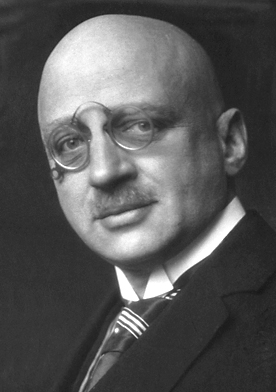
Haber was born in 1868 and was responsible for solving one of humanities biggest problems ever. He positively impacting over 4 billion people right up to today. At the same time, he was responsible for the painful deaths of over 4 million people. Clearly, there were some serious intended and unintended consequences at play.
Ammonium Nitrate

Ammonium nitrate as fertilizer and explosives component.
Haber originally developed a way to make ammonia as a crop fertilizer. BASF quickly purchased the rights for mass industrialisation. This led to humans being able to produce four times as much food crops to feed the growing World. As a result, the Earth’s population quickly quadrupled in less than a century. Fifty per cent of nitrogen atoms in your body today, came from the advantages of Haber’s process.
During WWI, Haber then developed an ammonium nitrate process, used as an explosive in bombs and shells for the Germans military. We recently witnessed in 2020, just how dangerous this substance is, during the Beirut explosion. Over 3000 tonnes of ammonium nitrate detonated killed 217 people and injured 7000+ whilst creating a 3.3 magnitude manmade earthquake.
Chlorine & Insecticide

Zyklon B, based upon Haber’s ammonium nitrate innovation.
Later during the Great War, Haber developed the potent chemical weapon, Chlorine gas. He intended to use it to save lives by ending the War quickly. He hoped mass allied deaths would result in immediate surrender. Over 5,000 soldiers died in first attack alone. And a total of 100,000 died by his chemical weapons by the end of the conflict. In 1915, Haber’s wife committed suicide as a result of his chemical weapons career.
Ironically, after Germany lost the War, Haber lost all of his enormous fortune to hyperinflation. He then died in poor health in 1933.
Ten years after his death, the Nazi’s modified Haber’s original cyanide-based insecticide and named it Zyklon B. Over 3.5 million people were subsequently exterminated in various gas chambers using his original chemical innovations and inventions.
Understanding orders of unintended innovation consequences
Although Haber could never have foreseen the horrific uses of his innovations to facilitate the mass murders of the Holocaust, the unintended uses of such weapons in the hands of the wrong people could have been foreseen.
Throughout Haber’s life, a plethora of extreme intended and unintended consequences occurred, spanning 1st, 2nd, 3rd order consequences linked together. Some during his life, others after his death. What this demonstrates is how important it is to critically reflect, analyse and in some cases, mitigate negative unintended consequences before they happen, where ever possible, for all our sakes.

Mapping possible unintended or unanticipated consequences early-on in the innovation process.
Every part, component and module comprising an innovation can be used for our benefit or to our detriment, both on People and Planet dimensions. As you saw in the example above, ammonia can be used as fertilizer or nitrate as explosive, the choice is down to us to ensure the best uses of our creative thinking and doing. We must innovate for our collective good, particularly in light of the sustainability challenges right in front of us day-by-day.
Some unintended consequences are knowable up-front and some are impossible to even begin to predict. But it doesn’t mean we shouldn’t, as standard practice and common sense due diligence when innovating or inventing.
Why unintended consequences are essential to understand today
The emergence of Industry 4.0 and the interconnectedness it brings, blurs the boundaries between the digital, physical and biological. We are in the process of combining all three previous industrial revolutions (1. mechanisation, 2. mass production and 3. automation) into cyber-physical systems. All our systems are becoming ever-more critically interconnected and interdependent upon one another to function as intended.
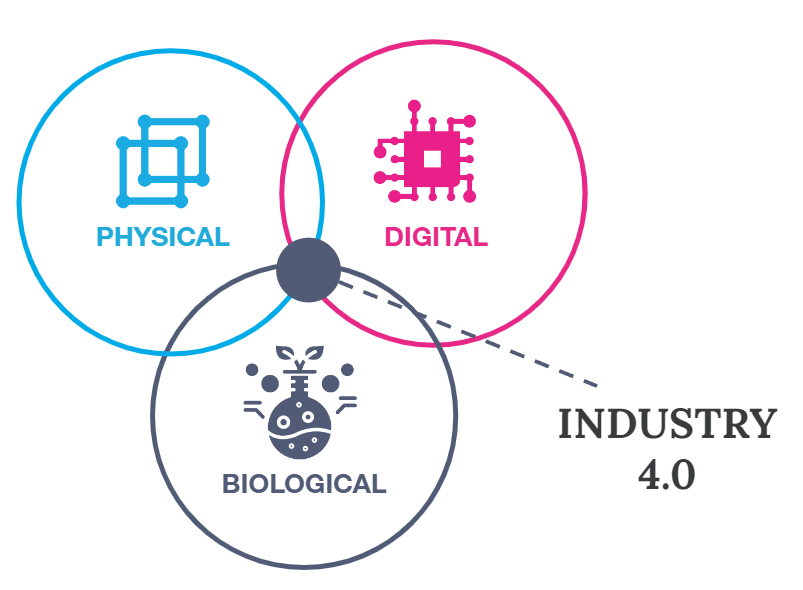
Industry 4.0 blurs domain boundaries, creating more complex unintended consequences to deal with.
This means unintended consequences can have more severe, far-reaching, rapid impacts across all our interconnected domains and environmental ecosystems.
The sheer speed in spread of COVID variants globally across the biological domain is a sobering reminder. As is the spread of computer malware and viruses in both software and critical physical infrastructure (read the Stuxnet case for more).
Systems level consequences thinking
Undesirable changes and consequences in one part of our systems can have rapid, widespread, deeply-felt outcomes in another (think: People, Planet, Profit and Progress domains).
We need to critically reflect, understand and make sense of our innovations upon entire systems (not just neat customer segments and markets) before we naively and optimistically plough-ahead with our biases left unchecked. To do this requires systems thinking capabilities combined and integrated into our existing innovation methodologies, tooling approaches along with a healthy amount of innovation sanity checks.
4 things you can do to mitigate unintended negative innovation consequences
Uncover and understand the wider systems dynamics your innovation or invention is part of
Use systems mapping to understand the people, planet, profit and progress dimensions, variables and factors at play to help you envisage and monitor systems level changes as they occur.
Build a culture of critical self-reflection across the innovation process as sanity checks and due diligence
Ensure your innovation process includes regular reflection moments, particularly after arriving at a new concept to test or business model to validate. Create open-awareness of your cognitive biases at play.
Run 1st, 2nd, 3rd order thinking workshops and scenarios regularly within your innovation team
Spend time using your systems maps to run likely scenarios on the impacts of features, functionalities, concepts, business models and technologies on key People, Planet, Profit and Progress stakeholders and dimensions over time (3 months, 12 months, 2 years, 20 years, 50 years…).
Build innovation KPI’s and accounting governance around understanding and monitoring negative outcome consequences
Make sure your ongoing innovation governance and performance metrics are built around monitoring and keeping tabs on the variables associated with your new innovations as they are tested and implemented.
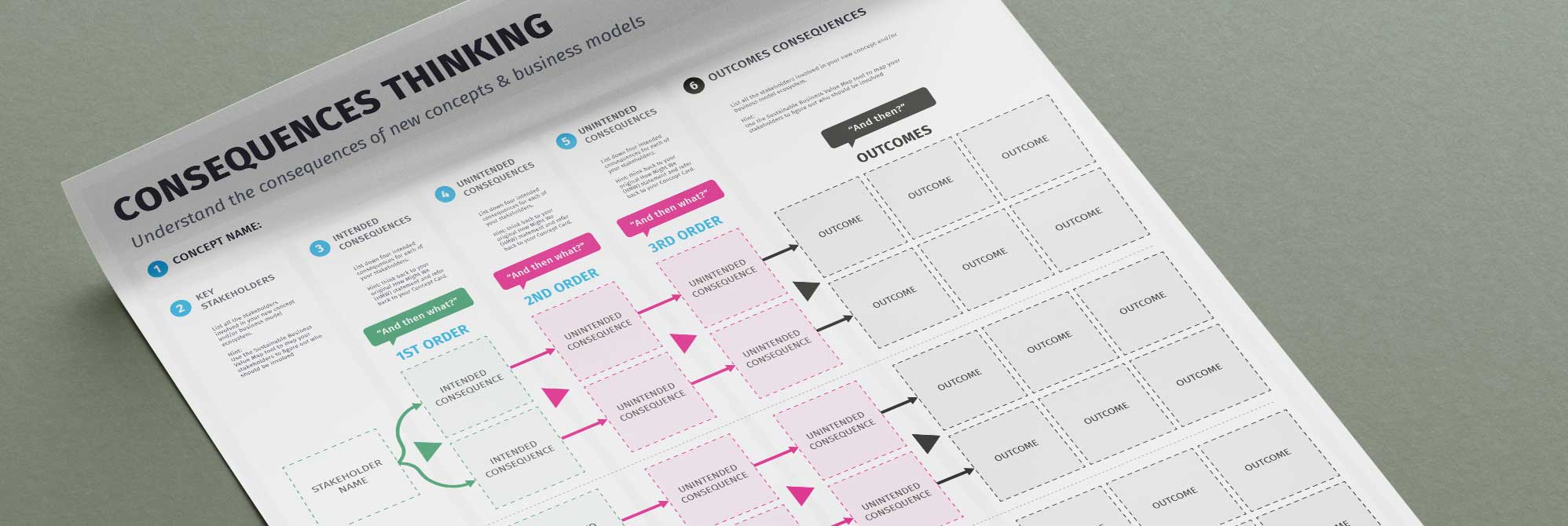
Key take-aways
Awareness to avoid pro-innovation bias
Innovation has the power to both drastically improve our lives and our environment, just as much as it has to make things drastically worse. We shouldn’t assume it will always have positive consequences. As practitioners it is our responsibility to be critically self-reflective throughout the innovation and business design process. We must be open to the possibility that our best intentions could make things exponentially worse in some way. Spotting unintended consequences using simple tools as standard practice throughout the innovation process is key.
Create consequences reflection moments
Make sure to include regular critical reflection points, particularly after you’ve arrived at a new concept or business model. Aim to analyze your intended outcomes and impact in relation to the dynamics and key variables of the social and environmental systems your innovation will change.
Understand 1st, 2nd & 3rd order consequences
The more you understand the system dynamics and their interconnected relations, the better informed you will be to imagine the 1st, 2nd and 3rd order knock-on effects across the system. Once you’ve prioritized the likely outcomes, you can make crucial changes before fully introducing them as you go-to-market.
Simply use our Unintended Innovation Outcomes canvas available for FREE here, to help you work through each likely consequence type, one after the other. Update and modify your concept features, functionalities and business model types to ensure your outcome innovation brings positive and sustainable intended outcomes the world so desperately needs right now.
FREE Download
Unintended Innovation Consequences Canvas
Understand and uncover the unintended consequences of new innovation concepts and business models.
Download Now!Mike Pinder is a cross-industry business innovation expert & consultant, thought leader, author, lecturer & international keynote speaker on innovation. He’s driven by using innovation to leave the world a better place than we found it. Mike is a co-founder of Wicked Acceleration Labs (an industry-academia research lab aimed at tackling wicked problems), Member of Board of Advisors at Global Innovation Institute (GInI), & Honorary Practice Fellow at Imperial College London Business School.
Mike consults and leads across innovation strategy, Design Thinking, Lean Start-up, Business Model Innovation in both B2B and B2C, guiding c-level innovation strategy, innovation accelerator design, co-creation, capability programs, academic research, executive education (Exec Ed) university program design, intrapreneurship, digital transformation, sprints & more.

Let’s talk!
Reach out below
We’ll discuss your specific sustainable business-innovation challenges and what to do about them
References
- Botsman, R. (2022) Tech Leaders Can Do More to Avoid Unintended Consequences, Wired.com. Available at: https://www.wired.com/story/technology-unintended-consequences/.
- Brown, T. (2019) Change By Design, Revised and Updated. New York: HarperCollins.
- Locke, J. (1824) The Works of John Locke in Nine Volumes. 12th edn. London: Rivington.
- Merton, R. (1936) ‘The unanticipated consequences of purposive social action’, American sociological review, 1(6), pp. 894–904.
- Osterwalder, A. and Pigneur, Y. (2010) Business Model Generation: A Handbook for Visionaries, Game Changers, and Challengers. Wiley.
- Ries, E. (2011) The Lean Startup: How Constant Innovation Creates Radically Successful Business. Penguin UK.





